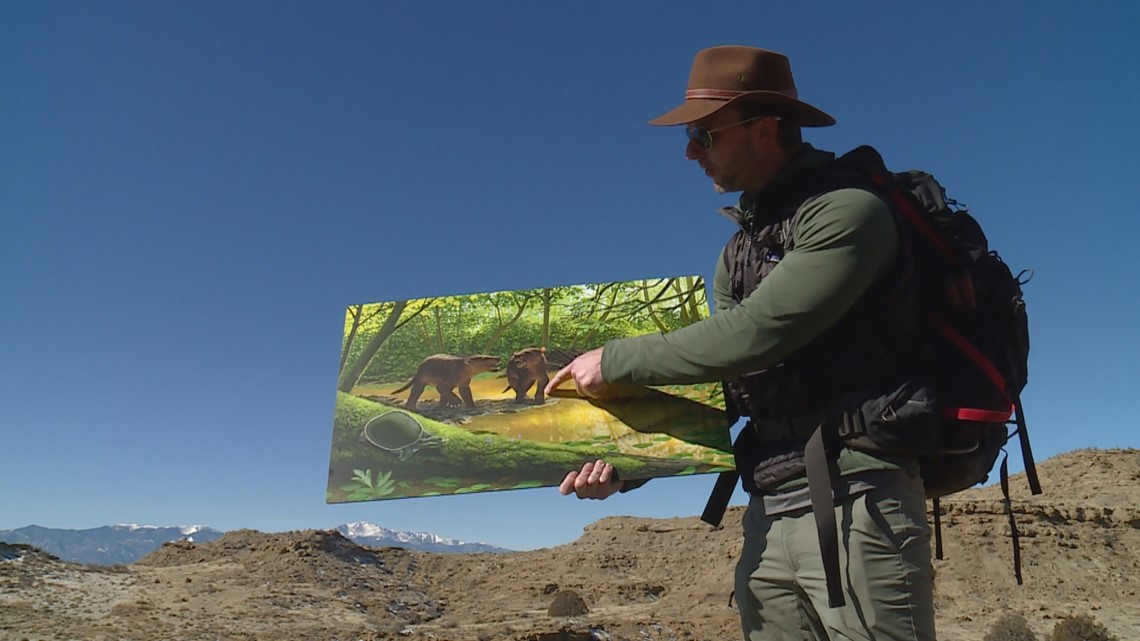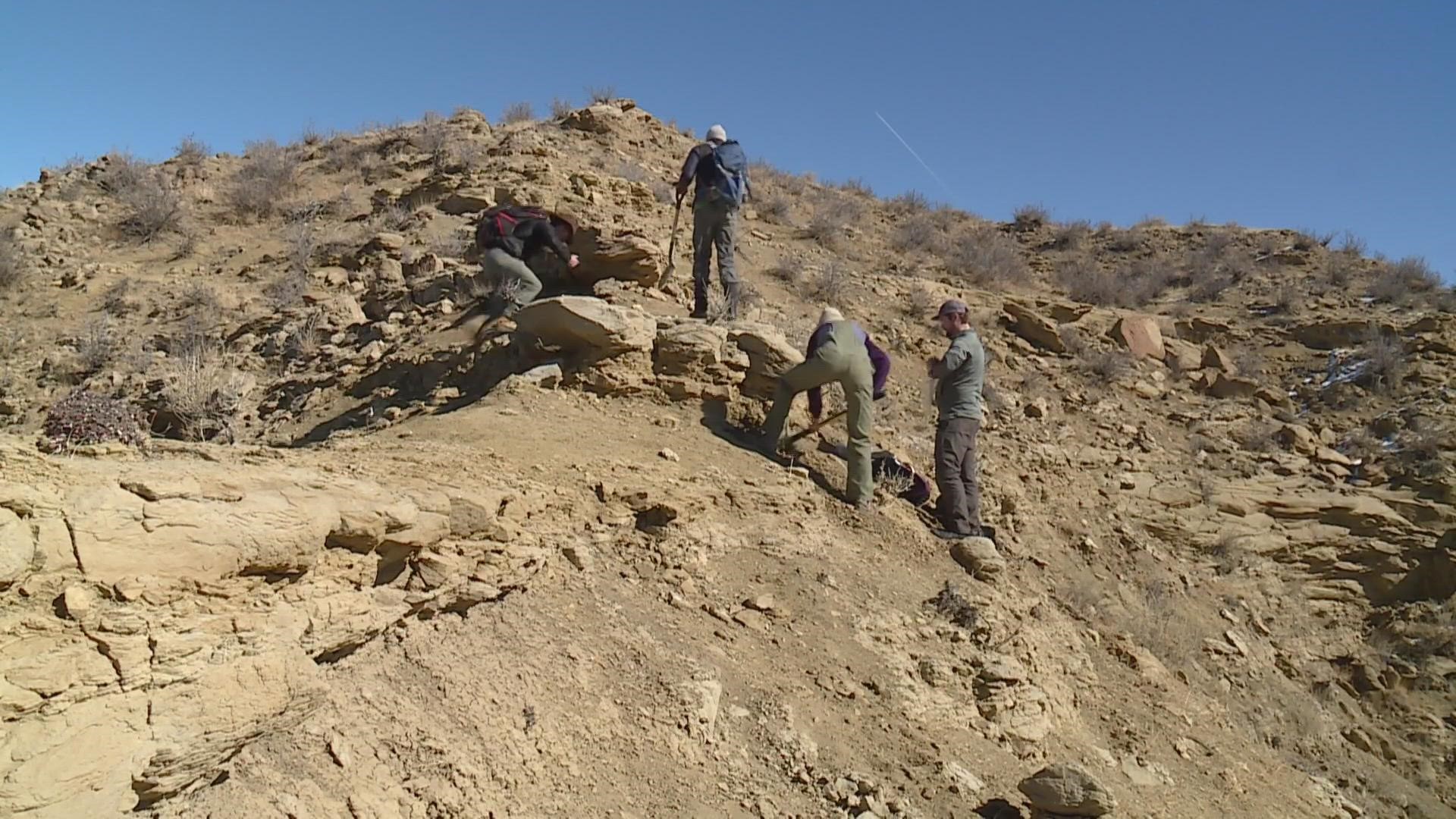COLORADO SPRINGS, Colo. — A fossil bed in Colorado Springs, called Corral Bluffs, is considered by many scientists to have the greatest fossil record in the world that spans the first million years after the dinosaurs vanished.
“It’s such a critical interval in earth’s history because it’s out with the dinosaurs, and it’s the origin of the modern world,” said paleontologist Tyler Lyson. "The rocks here capture a time period we call the rise of the mammals."
He said Corral Bluffs is a history book and the first chapter begins with the moment a giant asteroid, the size of Denver, hit the earth near the Yucatan Peninsula.


"That was the biologic reset button. The single worst day for multicellular life on earth," said Lyson. "Dinosaurs ruled the planet for 180 million years, until that fateful day."
He said it wasn't all over in a flash though. Many of the dinosaurs did meet their deaths quickly, while others died slower as a result of extreme weather and climate change.
Now, in the Colorado fossil record discovered at Corral Bluffs in 2016, paleontologists can reconstruct the ancient past. They found dinosaur bones and plants fossils to build the first draft of history, and now they are finding bacteria fossils to help verify those initial theories.
Lyson, who is a curator at the Denver Museum of Nature and Science, said the Colorado Front Range was likely 20 to 30 degrees warmer than it is today.
The clues his team is unearthing tell a tale of ancient climate change.
“But that’s very different than what’s happening today," he said. "We’re seeing it in essentially matters of thousands of years not tens or hundreds of thousands of years.”


Lyson said the message in the fossils should be very concerning to humans because it shows that climate change today is happening more than 10,000 times faster than any other time in earth's history.
"Many would say that we are in the beginning of another mass extinction," he said. "And if we've learned anything from the previous five mass extinctions, it's that its always the largest and most dominant groups that go extinct. And that would be humans."
He said there is a silver lining in the fossil record, however. If humans do vanish like the dinosaurs, life still goes on.
“This area here at Corral Bluffs showed how quickly life rebounded after the extinction of the dinosaurs – the extinction of 75% of life on earth,” said Lyson."If you just leave the environment alone, it can bounce back pretty darn quickly."
He said within about 700,000 years after the asteroid impact, there is evidence of animals 100 times bigger than the animals that survived the mass extinction.
There is a special exhibit called the Rise of the Mammals at the Denver Museum of Nature and Science. It's dedicated to the fossils and findings at Corral Bluffs.
More from Cory Reppenhagen:
SUGGESTED VIDEOS: Latest from 9NEWS

